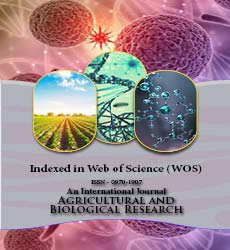Agricultural and Biological Research
RNI # 24/103/2012-R1
Tihitinna Asmellash*, Tollosa Geleta and Girma Kibatu
Milling and baking are processes which determine bread quality. Proximate compositions of wheat grains and flour samples from one central milling factory and bread samples from different bakeries in Kamise, Ethiopia were determined using standard methods in the laboratory. The fat and ash contents decreased by milling wheat grains; whereas, the moisture, protein and fat contents of the wheat flours increased in bread samples after baking. Highest amounts of Mg (243.25 ± 2.5 mg/kg) and Ca (350.40 ± 2.2 mg/kg) were found in the bread; while lowest concentrations of Mg (81.25 ± 0.15 mg/kg) and a higher Ca concentrations (110.75 ± 0.2 mg/kg) were observed in flour samples. Significantly highest amount of iron was obtained in the grains than in the flour and bread samples; indicating loss of iron in milling and baking processes. Lead was found on bread samples than in the grain or flour samples, which show the presence of contamination during baking processes. The variations between samples due to milling and differences in baking processes could be as a result of differences in water used, additives and fermentation parameters. The evaluation of milling and baking processes in affecting nutrient composition are important to control the nutritional quality of bread.
